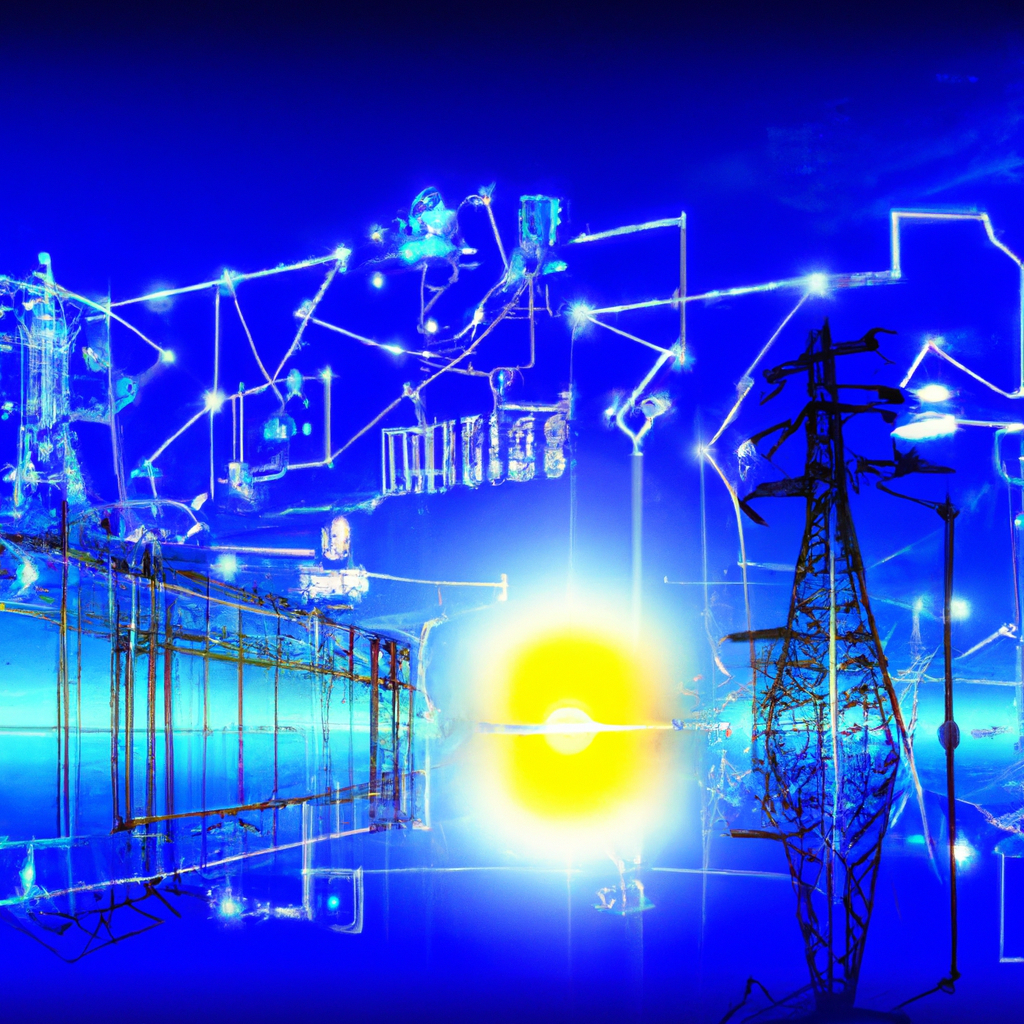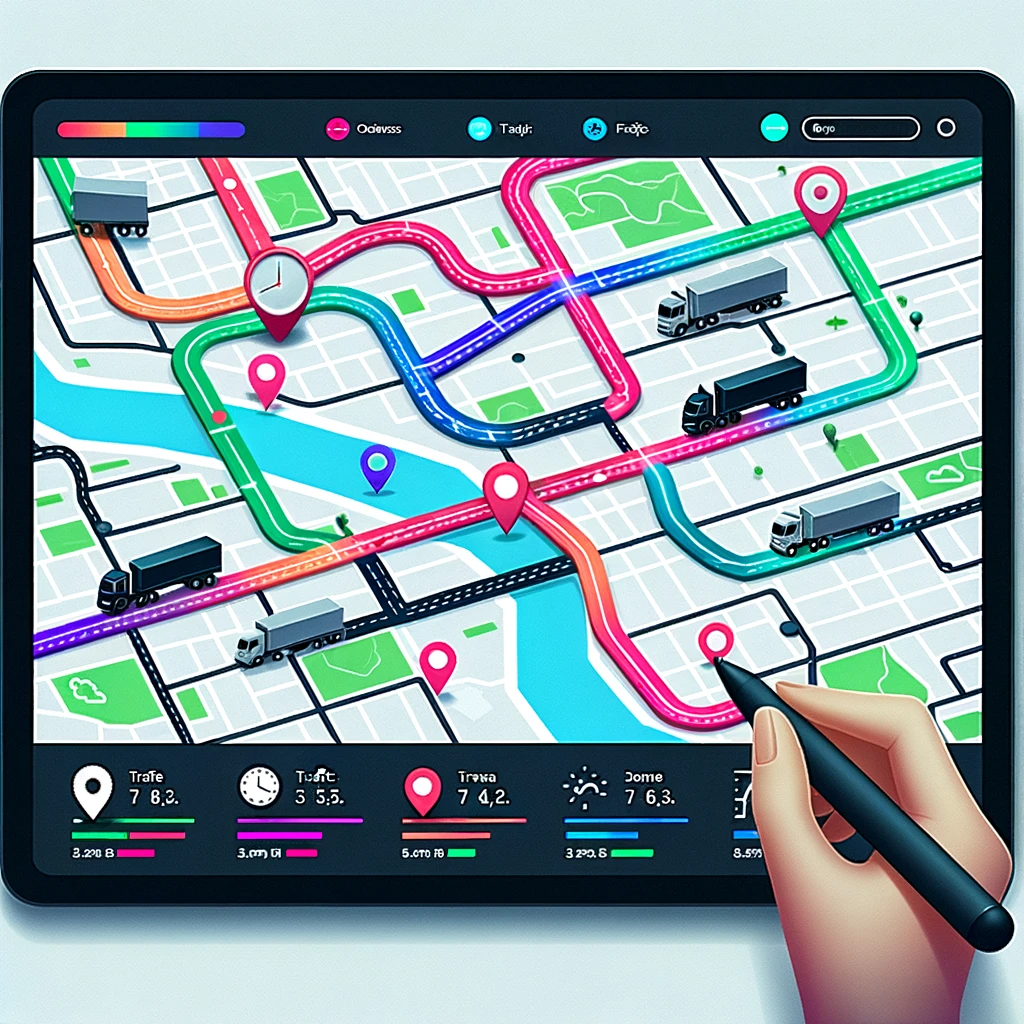Imagine a world where energy consumption is efficiently managed and forecasted, allowing us to save money, reduce waste, and become more sustainable. Thanks to artificial intelligence (AI), this vision is becoming a reality. AI is revolutionizing the way we anticipate and manage energy consumption, using advanced algorithms to analyze data, predict usage patterns, and optimize resource allocation. In this article, we will explore the various ways AI is transforming the energy sector, from smart grids to energy demand forecasting, and how this technology is paving the way for a greener, more efficient future. So, get ready to discover the untapped potential of AI in forecasting and managing energy consumption!

Understanding the Role of AI in Energy Management
Defining AI in the context of energy
Artificial Intelligence (AI) refers to the simulation of human intelligence in machines that are programmed to think, learn, and make decisions like humans. In the context of energy management, AI technologies are utilized to enhance the efficiency and effectiveness of various processes involved in forecasting, monitoring, and optimizing energy consumption.
Unveiling the concept of Smart Grids
smart Grids are modern electricity grids that utilize advanced technologies, including AI, to monitor, analyze, and control the flow of electricity. These grids enable better management and integration of various components, such as renewable energy sources, energy storage systems, and demand-response mechanisms. With the help of AI, Smart Grids can dynamically optimize the distribution and consumption of electricity, leading to improved energy efficiency and cost savings.
Discussion of AI-based Energy Management Systems (EMS)
AI-based Energy Management Systems (EMS) are software platforms that leverage AI algorithms to analyze energy data, monitor energy usage, and make autonomous decisions to enhance the efficiency of energy consumption. These systems can collect real-time data from various sources, such as smart meters, sensors, weather forecasts, and historical energy usage patterns, to optimize energy usage, identify anomalies, and suggest strategies for energy conservation. By continuously learning from data, AI-based EMS can adapt and optimize energy consumption patterns to reduce costs and environmental impact.
AI in Energy Consumption Forecasting
Introduction to energy consumption forecasting
Energy consumption forecasting involves predicting the future energy demand based on historical consumption patterns, weather conditions, economic factors, and other relevant variables. Accurate forecasting is crucial for utilities, grid operators, and energy-intensive industries to optimize production, distribution, and supply chain planning. AI has revolutionized the field of energy consumption forecasting by enabling more accurate and reliable predictions.
How AI improves accuracy of forecasts
AI algorithms, such as machine learning and neural networks, excel at analyzing complex and large datasets, identifying patterns, and making accurate predictions. By training on historical energy consumption data, AI models can learn the underlying patterns, seasonal variations, and dependencies between different variables that influence energy consumption. This enables AI to generate more precise forecasts that take into account factors such as weather variations, consumer behavior, and economic trends.
Case studies where AI has been used in forecasting
Several case studies demonstrate the effectiveness of AI in energy consumption forecasting. For example, a study conducted by a leading energy provider used AI algorithms to accurately forecast electricity consumption by combining historical data, weather forecasts, and demographic information. This allowed them to optimize energy generation and distribution, resulting in significant cost savings and reduced environmental impact. Another case study involved using AI to forecast energy demand for a manufacturing plant, enabling the plant to optimize production schedules and reduce energy waste.
AI in Renewable Energy
Overview of AI in renewable energy sources
Renewable energy sources, such as wind and solar power, play a crucial role in transitioning towards a more sustainable and low-carbon energy system. AI has the potential to enhance the efficiency, reliability, and scalability of renewable energy sources by optimizing their integration, operation, and maintenance.
Wind and solar forecasting with AI
AI-based forecasting models can significantly improve the accuracy of wind and solar power generation predictions. By analyzing historical weather data, satellite imagery, and wind speed measurements, AI algorithms can generate highly precise forecasts of renewable energy output. This enables grid operators and energy companies to better plan for the integration of variable renewable energy sources, optimize grid stability, and reduce the need for expensive backup power generation.
Optimization of renewable energy use via AI
AI can also optimize the use of renewable energy by intelligently managing energy storage systems, such as batteries. By analyzing real-time energy demand, weather conditions, and electricity prices, AI algorithms can determine the most efficient times to charge and discharge energy storage systems. This allows for better utilization of renewable energy sources, reduced reliance on fossil fuel-based power plants, and improved grid flexibility.
AI-driven Energy Efficiency
Methods of energy conservation through AI
AI can help achieve energy conservation by identifying inefficiencies, analyzing energy usage patterns, and suggesting strategies for optimization. For example, AI algorithms can analyze energy data from commercial buildings and identify opportunities for energy savings through more efficient HVAC systems, lighting controls, and occupancy sensors. AI can also monitor and optimize industrial processes to minimize energy waste and improve overall efficiency.
Reducing energy waste with AI
Energy waste is a significant challenge in many sectors. AI can play a vital role in reducing energy waste by continuously monitoring energy consumption patterns, detecting anomalies, and automatically implementing energy-saving measures. For instance, AI-based EMS can adjust thermostats, control lighting levels, and optimize equipment operations based on real-time energy demand and occupancy patterns, leading to significant energy savings.
Predictive analytics role in energy efficiency
Predictive analytics, a branch of AI, is instrumental in improving energy efficiency. By analyzing historical energy consumption data, weather patterns, and other relevant variables, AI models can predict future energy demand and propose energy-saving strategies. This enables organizations to proactively manage energy consumption, optimize resource allocation, and reduce both costs and environmental impact.

AI in Grid Management
Demand-response management with AI
Demand-response management involves adjusting energy consumption to align with the supply-demand balance in real-time. AI can enhance demand-response capabilities through advanced analytics and automation. AI algorithms can analyze real-time data from smart meters, weather forecasts, and market prices to optimize energy consumption, encourage load shifting, and incentivize customers to reduce energy usage during peak periods. This helps grid operators maintain grid stability and avoid blackouts or overloading.
Load balancing by AI
AI can address the challenge of load balancing in power grids, especially with the integration of renewable energy sources. By continuously monitoring real-time data on energy supply, demand, and grid conditions, AI algorithms can optimize the distribution of electricity across the grid. This ensures that energy is efficiently allocated, reducing the risk of grid congestion, and maximizing the use of renewable energy generation.
Use of AI in detecting and managing grid anomalies
AI plays a crucial role in detecting and managing anomalies in power grids. By analyzing data from sensors, smart meters, and other grid monitoring devices, AI algorithms can identify abnormal patterns, equipment failures, and potential system risks. This allows grid operators to take proactive measures, such as rerouting power, initiating repairs, or implementing backup plans, to prevent grid failures and ensure reliable power supply.
Challenges in Implementing AI for Energy Management
Technical hurdles
Implementing AI in energy management faces technical challenges. One significant challenge is the integration and interoperability of different AI systems and platforms. Energy systems are complex, and AI solutions must be able to interact with various components, such as smart meters, energy storage systems, and renewable energy sources. Additionally, AI algorithms require high-quality data to generate accurate insights, and ensuring data quality and availability can be a challenge.
Privacy and security concerns
AI systems for energy management rely on collecting and analyzing large amounts of data, raising privacy and security concerns. protecting customer data, ensuring secure communication between AI systems and energy infrastructure, and guarding against cyber threats are critical considerations in implementing AI for energy management. Maintaining transparency about data usage and obtaining informed consent from individuals is essential in building trust and ensuring data privacy.
Cost and affordability issues
Implementing AI systems for energy management can involve significant upfront costs, especially for smaller organizations and developing countries. The cost of acquiring and deploying AI infrastructure, training AI algorithms, and ensuring continuous maintenance and updates can be a barrier to adoption. Ensuring affordability and demonstrating the return on investment (ROI) of AI implementations are crucial for widespread adoption across the energy sector.

AI’s Impact on Energy Policies and Regulatory Bodies
Influence of AI on energy policies
AI has the potential to significantly influence energy policies by enabling more informed decision-making, optimizing energy resource allocation, and supporting the achievement of sustainability goals. AI-based energy management systems can provide policymakers with real-time insights on energy consumption patterns, renewable energy potential, and supply-demand dynamics. This allows policymakers to design more effective policies to promote energy efficiency, incentivize renewable energy adoption, and create a more sustainable energy future.
Changing regulatory landscape due to AI adoption
The adoption of AI in energy management necessitates changes in the regulatory landscape. Regulators need to develop guidelines and frameworks to ensure the safe, ethical, and responsible use of AI technologies. This includes addressing issues related to data privacy, security, algorithm transparency, and the potential biases in AI decision-making. Regulators also need to balance the need for innovation and fostering AI adoption while ensuring fair competition and protecting consumer interests.
AI application in improving policy enforcement
AI technologies can enhance policy enforcement by providing real-time monitoring, automated compliance checks, and data-driven enforcement mechanisms. For instance, AI-based monitoring systems can detect and prevent energy theft, ensure grid reliability, and enforce energy efficiency standards. By leveraging AI, policymakers and regulatory bodies can more effectively enforce energy regulations, ensure compliance, and address emerging energy challenges.
The Role of Big Data in AI for Energy Management
Use of Big Data in energy analysis
Big Data plays a crucial role in AI for energy management. The large volume, velocity, and variety of data generated by smart grids, sensors, and energy monitoring devices provide valuable insights for optimizing energy consumption and improving grid operations. By analyzing big data, AI algorithms can uncover hidden patterns, identify correlations, and generate actionable intelligence to enhance energy efficiency and inform decision-making.
Improvement of AI models through Big Data
Big Data enables the continuous improvement of AI models for energy management. By feeding large amounts of high-quality data into AI algorithms, organizations can refine their models to make more accurate predictions, improve energy forecasting, and optimize energy consumption. The iterative process of training AI models with big data allows organizations to adapt to changing energy consumption patterns, emerging trends, and evolving consumer behaviors.
Big Data’s role in predictive analysis
Predictive analysis relies on the availability of large datasets to generate accurate forecasts. Big Data provides the necessary inputs for AI algorithms to analyze historical energy consumption trends, weather patterns, demographic information, and other relevant variables. By combining and analyzing these vast datasets, AI tools can generate highly reliable predictions of energy demand, consumption patterns, and grid behavior. This enables proactive decision-making, efficient resource allocation, and better grid management.

Future of AI in Energy Management
Potential advancements in AI for energy management
The future of AI in energy management holds immense potential for advancements. AI technologies, such as deep learning and reinforcement learning, are continuously evolving and enabling more sophisticated energy management systems. Advancements in AI hardware, such as quantum computing, could further enhance the computational power and speed of AI algorithms. Additionally, the integration of AI with emerging technologies, such as Internet of Things (IoT) and 5G, could lead to more intelligent and autonomous energy systems.
Impact of AI advancements on energy consumption
As AI continues to advance, it is expected to have a profound impact on energy consumption. AI-based energy management systems can optimize energy usage, identify energy-saving opportunities, and automate energy-consuming processes. This can lead to significant reductions in energy waste, lower utility bills, and a more sustainable energy future. Additionally, AI can facilitate the integration of renewable energy sources into the grid, reducing reliance on fossil fuels and accelerating the transition to a clean energy economy.
AI’s potential role in achieving sustainable energy targets
Achieving sustainable energy targets, such as reducing greenhouse gas emissions and increasing the share of renewable energy, requires innovative solutions. AI has the potential to play a significant role in this regard. By optimizing energy consumption, improving energy efficiency, and enabling the integration of renewables, AI can help accelerate the transition to a sustainable and low-carbon energy system. This would contribute to mitigating climate change, reducing dependence on fossil fuels, and securing a cleaner and more sustainable future.
Companion Technologies for AI in Energy Management
Exploring Internet of Things (IoT) in energy management
The Internet of Things (IoT) provides a complementary technology to AI in energy management. IoT devices, such as smart meters, sensors, and actuators, generate real-time data on energy consumption, grid performance, and equipment conditions. This data can be utilized by AI algorithms to make informed decisions and optimize energy management strategies. By combining AI and IoT, energy systems can become more intelligent, responsive, and efficient, leading to improved energy management.
Discussion on cloud computing and edge computing
Cloud computing and edge computing are essential components supporting AI in energy management. Cloud computing provides the necessary computational resources, storage capacity, and scalability to process and analyze vast amounts of energy data. AI algorithms can be trained on cloud platforms and then deployed for real-time decision-making. Edge computing, on the other hand, involves processing data closer to the source, reducing latency and enabling more real-time AI-driven energy management. Both cloud computing and edge computing have their respective applications and benefits, depending on the specific energy management requirements.
Role of Blockchain technology in energy applications
Blockchain technology holds potential for transforming energy applications by enhancing transparency, security, and decentralization. In the context of AI in energy management, blockchain can enable peer-to-peer energy transactions, automate decentralized energy markets, and ensure trust in data sharing. By combining AI and blockchain, energy management systems can become more reliable, resilient, and capable of fostering decentralized energy generation and consumption. The integration of AI, IoT, and blockchain can create synergistic effects, leading to more efficient and inclusive energy systems.











